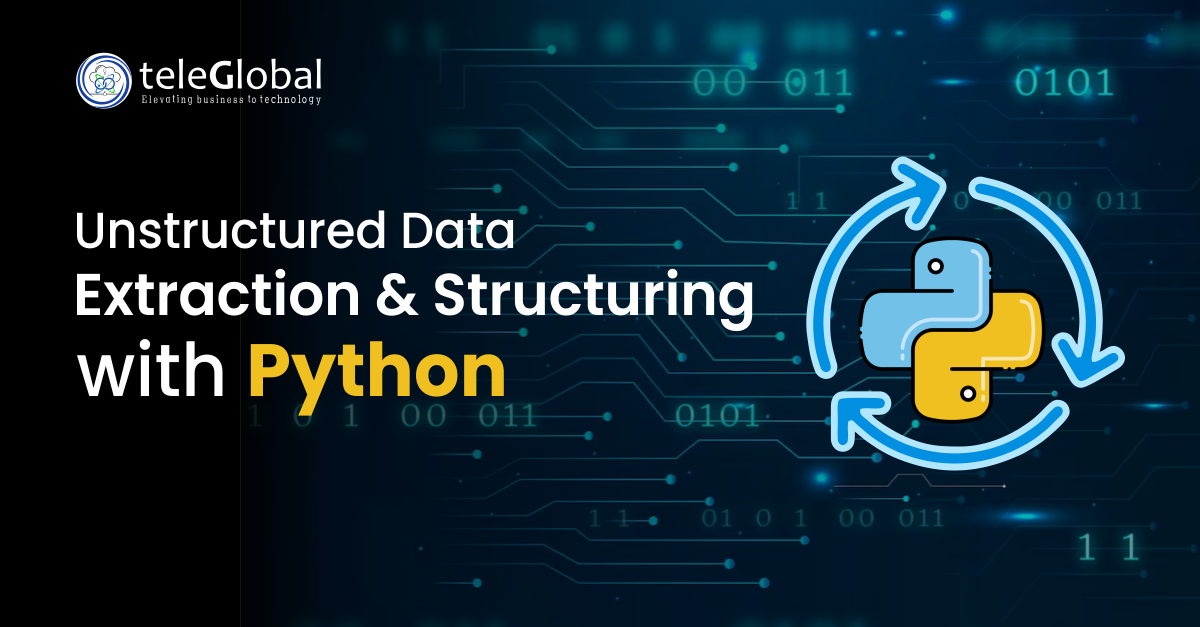
Keywords: Python, OCR Translation, AI API, Data Science, Data Analysis, Data Extraction
1. Introduction:
The proliferation of unstructured data on public domains poses a significant challenge for organizations seeking to extract meaningful insights. In this case study, we explore a comprehensive Python-based approach to unstructured data extraction and structuring. The process involves navigating web scraping obstacles, utilizing OCR translation for multilingual data, and employing data processing techniques to ensure structured and analysable datasets.
2. Scraping Strategies and Translation Mechanisms:
Challenge: The web scraping process is often hindered by obstacles such as IP blocking and varying data formats. Additionally, the presence of diverse data in regional languages like Marathi adds complexity to the extraction process.
Solution: Python scripts, coupled with IP and dropdown JSON, provide a dynamic strategy for overcoming web scraping challenges. By simulating different IP addresses, the scripts mitigate the risk of IP blocking, allowing for more robust data collection. The integration of dropdown JSON further enhances the adaptability of the scraping mechanism to varying website structures.
To address the multilingual nature of data, an in-house OCR translator built in Python is employed. This translator plays a pivotal role in converting unstructured multilingual PDFs into structured English Excel sheets. Leveraging OCR capabilities ensures a more accurate translation of regional languages, contributing to the overall success of the data extraction process.
Example: Consider a scenario where a Python script, equipped with IP’s and dropdown JSON, navigates public domains to extract diverse data. Upon retrieval, the in-house translator operates via OCR to convert multilingual PDFs into structured English Excel sheets.
3. Addressing Unstructured Data Challenges:
Challenge: Despite successful translation, the obtained data remains unstructured, containing variations, noise, and irrelevant information. This poses a significant hurdle in extracting meaningful insights from the collected data.
Solution: The code incorporates various Python libraries, including pandas, regex, and an API key, to address the challenges associated with unstructured data. The api_extractor function interacts with APIs, targeting specific information extraction, such as addresses, seller and buyer names, apartment details, etc., from the disorganized data.
Regex patterns play a crucial role in identifying and extracting key elements from the unstructured Marathi data. Despite variations and noise in the information, regex provides a flexible and powerful tool for pattern matching, enhancing the accuracy of data extraction.
Example: The code utilizes regex patterns to identify and extract crucial elements like addresses, seller names, buyer names, and apartment details from the unstructured Marathi data, despite the variations and noise present in the information.
4. Data Processing Pipeline and Structuring Techniques:
Challenge: Ensuring that the extracted data aligns with the desired output format for further analysis is a critical step in the data processing pipeline.
Solution: The data processing pipeline begins by importing data from Excel and CSV files into data frames using the pandas library. These data frames undergo comprehensive processing, including column renaming, handling missing data, and employing regex patterns to extract diverse features.
Checks are performed to rectify missing columns, while data manipulation aligns the output with the desired format for downstream analysis. This structured approach ensures that the data is organized and ready for in-depth exploration and interpretation.
Example: After obtaining data from web scraping and translation, the code uses pandas to manipulate and structure the data. It renames columns, handles missing values, and employs regex patterns to extract specific details, ensuring the information aligns with the desired output format for further analysis.
5. Key Takeaways:
- Successful data extraction involves navigating web scraping challenges using Python scripts, IP’s, and dropdown JSON.
- Translation of Marathi data into English Excel format is achieved through an in-house OCR translator built in Python.
- Unstructured data challenges are addressed using Python libraries like pandas, regex, and API keys.
- The api extractor function targets specific information extraction, overcoming variations and noise in the data.
- The data processing pipeline ensures structured data by handling missing values, renaming columns, and employing regex patterns.
6. Results and Impact:
The implementation of this Python-based approach yields significant results in enhancing the efficiency of extracting and structuring diverse data from public domains. Translation mechanisms using OCR prove vital in converting regional languages like Marathi into a standardized format for analysis. The use of Python libraries and structured processing pipelines contributes to a streamlined data extraction and analysis workflow.
Impact:
- Improved efficiency in data extraction from public domains.
- Standardized translation of regional languages for better analysis.
- Streamlined data processing pipeline for structured datasets.
- Enhanced accuracy in extracting key information from unstructured data.
7. Future Recommendations:
The success of the current approach opens avenues for future enhancements and refinements. To further improve the system, the following recommendations are proposed:
- Explore Advanced OCR Techniques: Investigate advanced OCR techniques to improve translation accuracy, especially when dealing with complex regional languages.
- Regularly Update Regex Patterns and API Key Configurations: Keep regex patterns and API key configurations up-to-date to adapt to evolving data structures and website changes. Regular maintenance ensures the continued effectiveness of the data extraction process.
- Implement Machine Learning Algorithms: Consider incorporating machine learning algorithms for dynamic handling of unstructured data variations. This can lead to improved adaptability and accuracy in extracting information from diverse sources.
8. Conclusion:
In conclusion, the Python-based approach presented in this case study successfully addresses the challenges associated with unstructured data extraction and structuring. The adaptability of the solution to diverse challenges in data science and analysis is evident. By combining web scraping strategies, OCR translation, and structured data processing techniques, organizations can unlock valuable insights from a wide range of public domains. This case study provides a blueprint for leveraging Python in the extraction and structuring of unstructured data, offering a robust framework for data-driven decision-making.








































